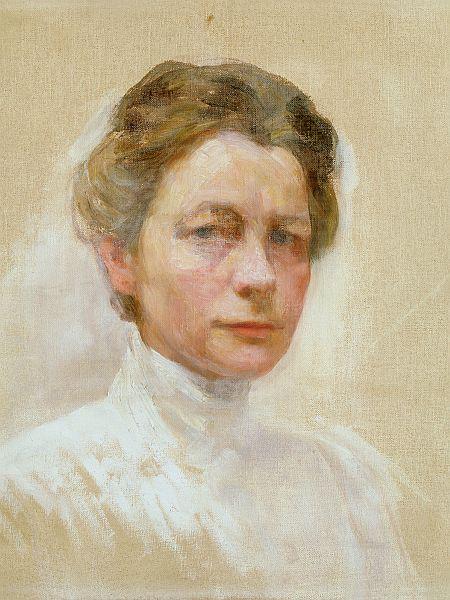
In an era when female artists were rare, one Slovenian painter bucked the trend. Ivana Kobilca not only became a visual chronicler of fin de siècle life in Slovenia, but also made a name for herself as one of the country’s foremost artists.
Born into a wealthy, educated family in 1861, Kobilca was not destined to be a path-breaking woman artist. However, she enjoyed drawing as a child, and was so captivated by the paintings of the old masters during a visit to Vienna’s galleries with her father that she decided to become an artist herself.
Kobilca spent ten years studying art in Munich and traveled around Europe studying great art. But despite her cosmopolitan lifestyle, her motifs tended to focus on the everyday lives of ordinary people. One of her works, the 1988 painting The Coffee Lady, has become an iconic Slovenian work of art in part because of the ordinary nature of the scene it portrays: An elderly woman with a kind, expressive face sipping a cup of coffee. Polls continue to rank it as one of the most popular works exhibited in Slovenia’s National Gallery.
Another of Kobilca’s works, a painting titled Summer, a warm portrait of a family at play, got Kobilca into a prestigious exhibition in Paris -- and was eventually exhibited in important art centers throughout Europe. With her keen eye for detail in ordinary situations, Kobilca made her mark in a profession that had long been dominated by men, and where a female newcomer was viewed with intense suspicion. Her skill helped to break the glass ceiling: Even the notoriously fickle French press gave Summer rave reviews, and Kobilica moved to Paris, where she received additional training.
Kobilca spent several years living in Sarajevo and Berlin before returning to Ljubljana before the outbreak of World War I. She continued to paint but her later work failed to make the impact of her earlier art, and she eventually stopped exhibiting. Kobilca had remained conservative in her style and temperament while the art world had moved on. In an era of Picasso and the Russian avant-garde, Kobilca remained a practitioner of a realist style from a very different era.
Kobilca died in 1926, just weeks shy of her 65th birthday. If her artistic conservatism caused her to be somewhat eclipsed in her old age, she is now recognized as Slovenia’s foremost female artist of all time. In 1979, she was the subject of a retrospective at the National Gallery, and her likeness graced the 5000-tolar bill before the currency was replaced by the euro.

































































